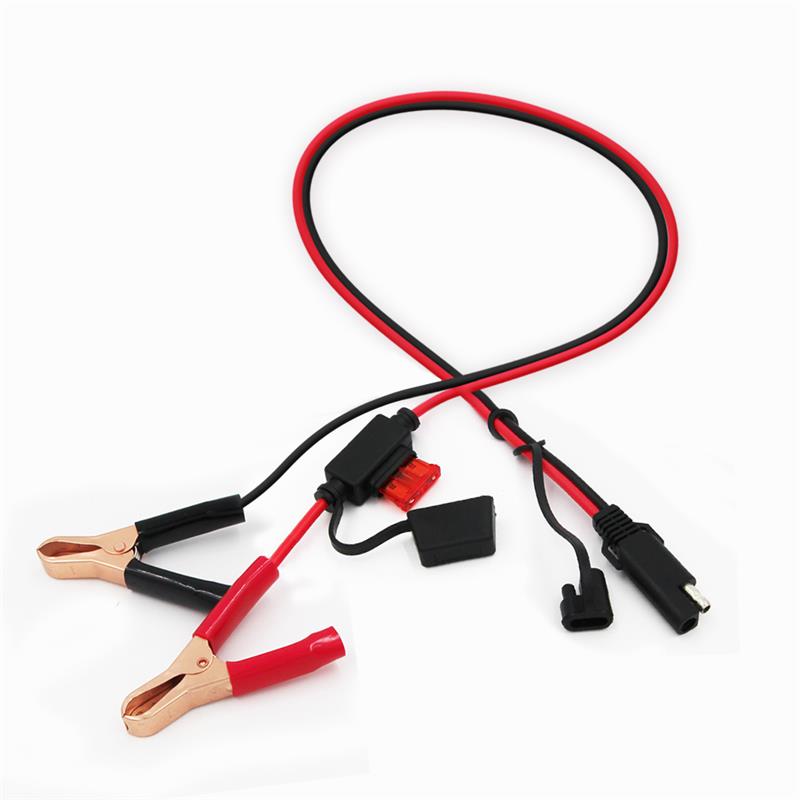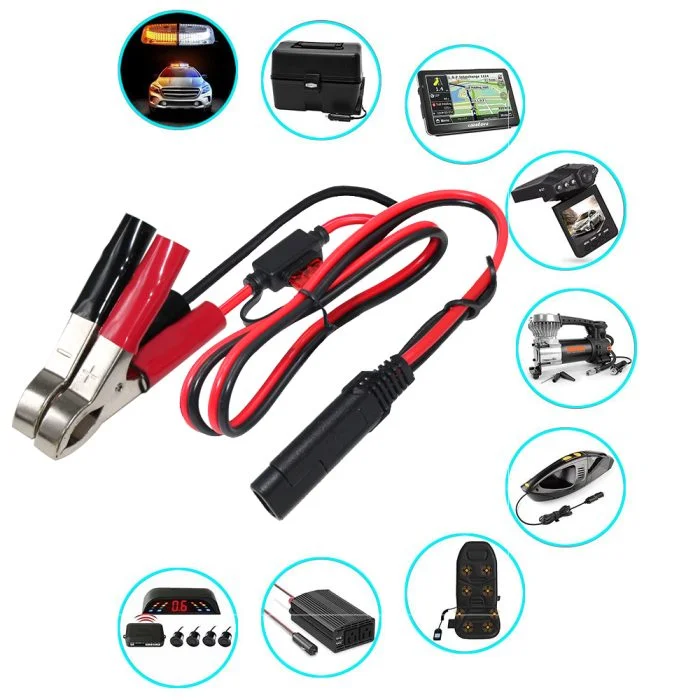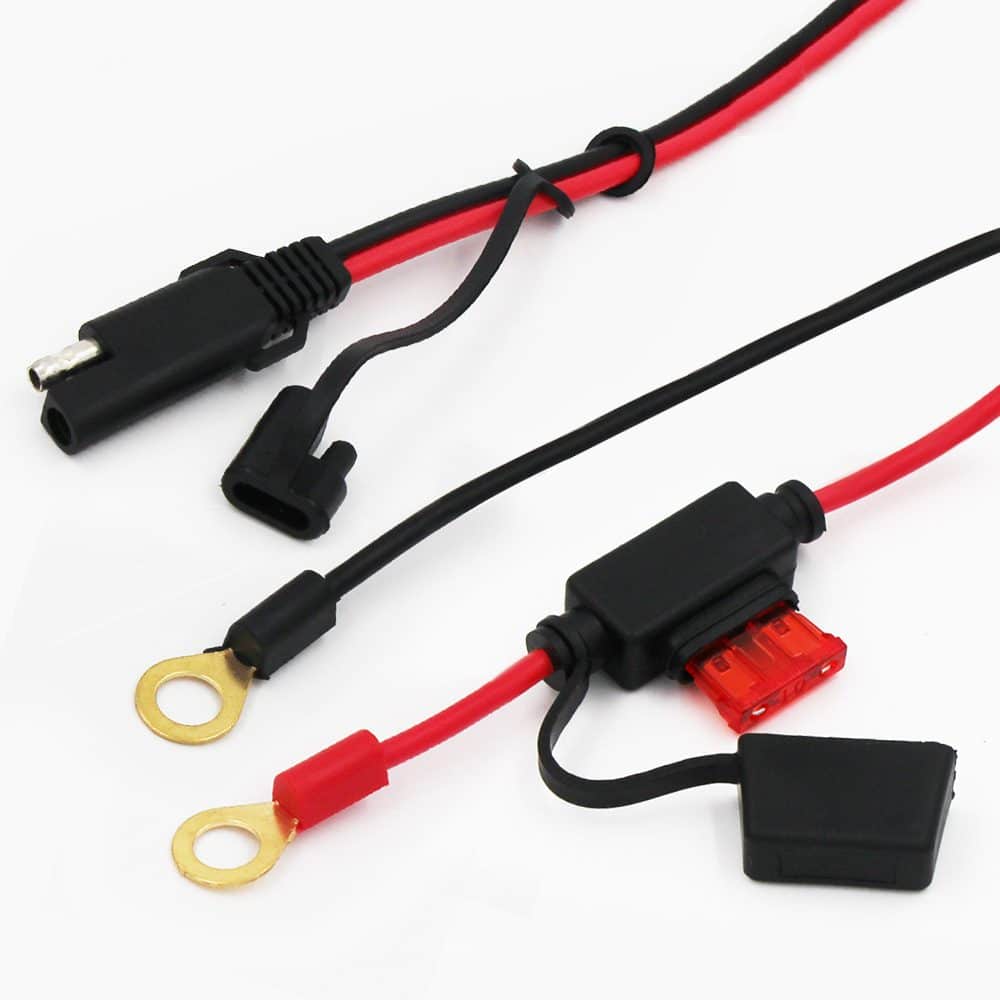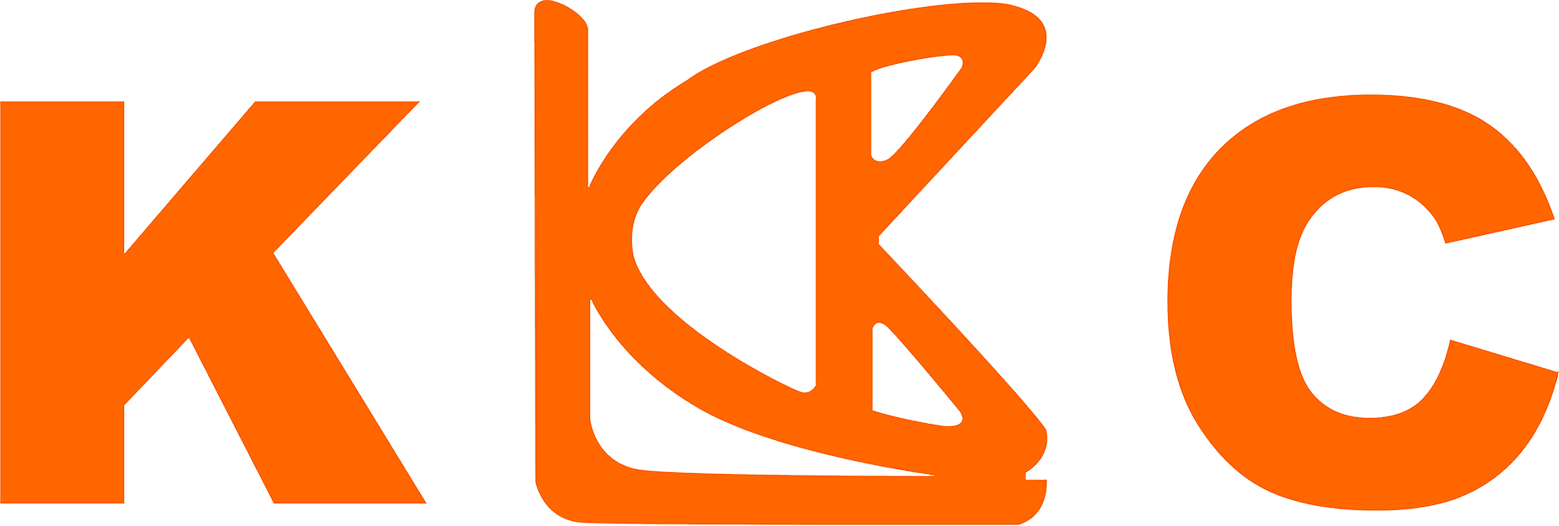The Cost-Benefit Analysis of SAE Solar Cable: Maximizing Value in Solar Energy Systems
Introduction
The sae solar cable plays a critical role in connecting solar panels to inverters in solar power systems. With the rapid growth of the solar industry and the increasing demand for high-quality cables, it is important to understand the value and cost-effectiveness of sae solar cable. In this article, we will conduct a cost-benefit analysis of sae solar cable to help readers make informed choices in their purchasing decisions.
How to choose SAE solar cable?
When it comes to choosing the right cable, there are several factors to consider. Firstly, the cable must be able to withstand the harsh outdoor conditions that solar panels are typically exposed to. This includes extreme temperatures, UV radiation, moisture, and physical stress. A high-quality sae solar cable will have a durable insulation and jacketing material that can protect the conductors from these environmental factors, ensuring a long lifespan and reliable performance.

Secondly, the sae solar cable must be able to efficiently transmit the generated electricity from the solar panels to the inverters. This requires low resistance and high conductivity, which can be achieved through the use of high-quality copper conductors. Copper is known for its excellent electrical conductivity, making it the preferred choice cables. Additionally, the cable should have a sufficient cross-sectional area to minimize power losses and maximize the overall system efficiency.
Another important consideration in the cost-benefit analysis of sae solar cable is the ease of installation. A well-designed cable will have features that simplify the installation process, such as pre-terminated connectors or color-coded insulation for easy identification of positive and negative conductors. This can significantly reduce the installation time and labor costs associated with setting up a solar power system.
cost-effectiveness
In terms of cost-effectiveness, sae solar cable may have a higher upfront cost compared to lower-quality alternatives. However, it is important to consider the long-term benefits and savings that come with investing in a high-quality cable. A reliable sae solar cable will require minimal maintenance and replacement, resulting in lower lifetime costs. Additionally, the improved efficiency and performance of a high-quality cable can lead to higher energy yields, translating into greater savings on electricity bills.
In conclusion, the sae solar cable is a crucial component in solar power systems, connecting the solar panels to the inverters. When evaluating the cost-effectiveness of sae solar cable, it is important to consider factors such as durability, efficiency, ease of installation, and long-term savings. By investing in a high-quality sae solar cable, individuals and businesses can ensure the reliable and efficient operation of their solar power systems, while also enjoying the environmental and economic benefits of solar energy.
SAE solar cable is a type of cable that is specifically designed for use in solar energy applications. It is known for its excellent electrical conductivity, weatherability, and fire resistance, making it an ideal choice for solar energy systems. The quality of the cable is of utmost importance in solar energy systems, as it directly affects the performance and safety of the entire system.

One of the key features of SAE solar cable is its excellent electrical conductivity. This means that it allows for efficient power transmission, ensuring that the solar energy generated by the panels is effectively transferred to the electrical system. This is crucial for maximizing the efficiency of the solar energy system and minimizing any power losses.
In addition to its electrical conductivity, SAE solar cable also boasts exceptional weatherability. Solar energy systems are typically exposed to various weather conditions, including extreme temperatures, UV radiation, and moisture. The cable’s weatherability ensures that it can withstand these conditions without deteriorating or losing its performance over time. This is particularly important for outdoor solar installations, where the cable is exposed to the elements.
Furthermore, SAE solar cable is designed with fire resistance in mind. This is crucial for the safety of the solar energy system and the surrounding environment. In the event of a fire, the cable’s fire resistance properties help to prevent the spread of flames and minimize the risk of electrical failures. This is especially important in solar energy systems, as they often involve high voltages and currents.
It ensures efficient power transmission, enhances the system’s performance, and reduces the risk of electrical failures. Additionally, its weatherability and fire resistance properties make it a reliable and safe choice for solar installations. When selecting a cable for a solar energy system, it is important to prioritize the quality and specifications of the cable to ensure optimal performance and safety.
One of the key reasons why cost-benefit analysis is important in the selection of cable products, such as sae solar cable, is that it allows buyers to assess the financial viability of their solar projects. Investing in a solar project involves significant upfront costs, including the purchase and installation of solar panels, inverters, and other equipment. Therefore, it is crucial for buyers to carefully evaluate the costs associated with the cable products they choose.
By conducting a cost-benefit analysis, buyers can compare the initial investment required for different cable options and weigh it against the potential benefits they will receive in return. These benefits can include increased energy efficiency, reduced maintenance costs, and improved reliability of the solar system. Additionally, a comprehensive analysis can help buyers identify any potential hidden costs associated with the cable products, such as higher maintenance or replacement expenses in the long run.
Furthermore, a cost-benefit analysis enables buyers to consider the quality of the cable products alongside their price. While it may be tempting to opt for the cheapest option available, this may not always be the most cost-effective choice in the long term. Poor-quality cables can lead to increased power losses, reduced system performance, and higher maintenance and replacement costs. Therefore, it is essential for buyers to evaluate the quality and reliability of the cable products and balance them against the price.

Moreover, a thorough cost-benefit analysis allows buyers to align their cable selection with their specific needs and budget. Different solar projects have unique requirements and constraints, such as the size of the system, the geographical location, and the expected energy output. By considering these factors alongside the costs and benefits of the cable options, buyers can make informed decisions that best meet their project goals and financial capabilities.
In conclusion, a comprehensive cost-benefit analysis is of utmost importance in the selection of cable products for solar projects. It enables buyers to assess the financial viability, consider the quality and price balance, and align their selection with their specific needs and budget. By conducting such an analysis, buyers can make informed decisions that contribute to the long-term success and profit maximization of their solar projects.
Cost Factors
Several factors contribute to the cost of sae solar cable. Raw material costs, such as copper and insulation materials, play a significant role in determining the overall price. Bakar, being a highly conductive metal, is an essential component of the cable and therefore affects its cost. The price of copper fluctuates in the market due to various factors such as supply and demand, global economic conditions, and geopolitical events. Insulation materials, on the other hand, are crucial for protecting the copper conductors from environmental factors such as moisture, heat, and UV radiation. The quality and type of insulation material used can vary, resulting in different costs.
Additionally, the manufacturing processes involved in producing sae solar cable also contribute to its cost. Extrusion, for instance, is a common method used to shape the cable’s outer layer and insulate the copper conductors. This process requires specialized machinery and skilled labor, which adds to the production costs. Insulation treatment is another step in the manufacturing process that enhances the cable’s durability and resistance to environmental factors. These treatments may include cross-linking the insulation material to improve its mechanical and thermal properties, further adding to the overall cost.
Despite these factors, sae solar cable offers advantages in terms of durability and long-term reliability, which contribute to its cost-effectiveness. The robust construction and high-quality materials used in its production ensure that the cable can withstand harsh environmental conditions, including extreme temperatures, moisture, and UV exposure. This durability translates into a longer lifespan for the cable, reducing the need for frequent replacements and maintenance.
Furthermore, sae solar cable’s long-term reliability makes it a cost-effective choice for solar installations. By investing in a high-quality cable upfront, solar system owners can avoid potential issues and costs associated with cable failures or degradation over time. The reliability of sae solar cable also contributes to the overall efficiency of the solar power system, as it minimizes power losses due to cable resistance or insulation breakdown.

In conclusion, while the cost of sae solar cable is influenced by factors such as raw material costs and manufacturing processes, its durability and long-term reliability make it a worthwhile investment. By choosing sae solar cable, solar system owners can ensure the efficient operation of their systems and minimize the need for costly repairs or replacements in the future.
Performance Evaluation
The performance of sae solar cable is crucial in determining its value. Factors such as electrical conductivity, durability (including UV resistance and cold resistance), and fire resistance (compliance with UL, TUV, and other certification standards) are key considerations. By evaluating the performance of sae solar cable, buyers can ensure that they are investing in a high-quality product that will deliver optimal results in their solar energy systems.
When it comes to electrical conductivity, sae solar cable is designed to provide efficient transmission of electricity from the solar panels to the inverter. This is important because any loss of conductivity can result in reduced energy production and overall system performance. Therefore, it is essential to choose a sae solar cable that offers low electrical resistance and high conductivity to maximize the energy output of the solar system.
In addition to electrical conductivity, durability is another crucial factor to consider when evaluating the performance of sae solar cable. Solar cables are exposed to various environmental conditions, including extreme temperatures, UV radiation, and moisture. A high-quality sae solar cable should be able to withstand these conditions without degradation or damage. UV resistance ensures that the cable’s insulation remains intact even when exposed to direct sunlight for extended periods. Cold resistance, on the other hand, ensures that the cable remains flexible and functional even in freezing temperatures.
Furthermore, fire resistance is an important aspect of sae solar cable performance evaluation. Solar energy systems involve the generation and transmission of electricity, which can pose a fire hazard if proper precautions are not taken. Therefore, it is crucial to choose a sae solar cable that complies with industry standards such as UL and TUV certifications. These certifications ensure that the cable has undergone rigorous testing to determine its fire resistance capabilities, providing peace of mind to the buyers.
One industry application example where sae solar cable is widely used is in solar PV power plants. These power plants generate electricity by converting sunlight into usable energy through the use of solar panels. The sae solar cable plays a crucial role in these power plants as it is responsible for transmitting the generated electricity from the solar panels to the inverter, where it is converted into usable AC power. The efficiency and reliability of the sae solar cable are essential in ensuring that the power generated by the solar panels is efficiently transmitted and utilized.
Another industry application where sae solar cable is extensively used is in home solar systems. With the increasing popularity of residential solar installations, homeowners are harnessing the power of the sun to generate clean and renewable energy for their households. Sae solar cable is an integral component of these systems as it connects the solar panels on the roof to the inverter and the electrical panel inside the house. The sae solar cable ensures that the electricity generated by the solar panels is safely and efficiently transmitted to power the appliances and lighting in the home.
When considering the cost-effectiveness of sae solar cable in these industry applications, it is important to analyze the long-term benefits it provides. The high-quality materials and construction of sae solar cable ensure its durability and longevity, reducing the need for frequent maintenance or replacement. This not only saves costs but also minimizes downtime and maximizes the energy generation potential of the solar PV power plants and home solar systems.
In conclusion, the industry application examples of solar PV power plants and home solar systems demonstrate the practical benefits and value of sae solar cable. Its role in efficiently transmitting the electricity generated by solar panels, its durability, and its ability to withstand harsh environmental conditions make it an essential component in maximizing the value of solar projects. Buyers looking to invest in solar installations can rely on sae solar cable to ensure the long-term success and profitability of their ventures.
Market Trends and Outlook
The sae solar cable market is influenced by various factors, including technological innovations, policy support, and changes in the solar industry. It is important to explore these trends to understand the future developments in the market. By analyzing the impact of new technologies, regulatory changes, and other factors on the cost-effectiveness of sae solar cable, readers can gain valuable insights into the evolving landscape and make informed decisions.
One of the key market trends in the cable industry is the increasing adoption of advanced solar technologies. As the solar industry continues to grow, there is a rising demand for more efficient and reliable solar cable solutions. Manufacturers are investing in research and development to enhance the performance of sae solar cable, resulting in improved power transmission and reduced energy losses. This trend is driven by the need to maximize the efficiency of solar power systems and increase the overall return on investment for solar projects.
Another important trend shaping the sae solar cable market is the evolving regulatory landscape. Governments around the world are implementing policies and incentives to promote the use of renewable energy sources, including solar power. These policies often include mandates for the use of high-quality cable to ensure the safety and reliability of solar installations. As a result, the demand for sae solar cable is expected to increase in the coming years, driven by the growing number of solar projects and the need to comply with regulatory requirements.
In addition to technological advancements and regulatory changes, market dynamics and competition also play a significant role in shaping the cable market. The industry is characterized by the presence of both established players and new entrants, each offering a wide range of products and solutions. This competitive landscape drives innovation and encourages manufacturers to develop sae solar cable that meets the specific needs of different solar installations. As a result, customers have a wide variety of options to choose from, ranging from standard sae solar cable to specialized solutions for specific applications.
Conclusion
Looking ahead, the outlook for the cable market is promising. The increasing adoption of solar power as a clean and sustainable energy source, coupled with supportive government policies and technological advancements, is expected to drive the demand for sae solar cable. The market is projected to witness steady growth in the coming years, with opportunities for both established players and new entrants to expand their market share.
For more informations, visit our website or contact our service team:
